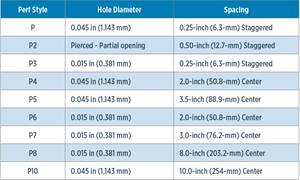Aramco funding accelerates deployment of global, sustainable energy storage technology
The EVx system, developed by Energy Vault, autonomously lifts and lowers composite blocks — an amalgamation of materials like fiberglass, and EOL windblades — to renewably generate and store electricity for multi-GWh storage capacity.

Photo Credit: Energy Vault
Energy Vault (Lugano, Switzerland) a developer of renewable energy storage products announced on June 2 a new investment from Saudi Aramco Energy Ventures (SAEV, Dhahran, Saudi Arabia), the strategic technology venturing program of global integrated energy and chemicals company Aramco (Dhahran). Energy Vault will use the funds to accelerate global deployment of its technology, EVx, which is designed to enable intermittent renewable energy generation to be stored at a gigawatt-hour scale both economically and sustainably, to deliver dispatchable power on demand. The amount of the investment was not disclosed.
Energy Vault’s technology was inspired by pumped hydro plants that rely on the power of gravity and the movement of water to store and discharge electricity. The company’s solution is reportedly based on the same fundamentals of physics and mechanical engineering used in those plants, but replaces water with custom-made composite blocks through an innovative use of local, low-cost materials and sophisticated material science.
EVx introduces a highly scalable and modular architecture that can be built out in 10-MWh increments that can scale to multi-GWh storage capacity.
The blocks are said to be combined with Energy Vault’s proprietary system design and machine vision, AI-enabled software to operate a specially designed crane which autonomously orchestrates the lifting and lowering of the blocks, thus storing the potential energy at height and then discharging electricity as the blocks are lowered and generating electricity. Importantly, says Energy Vaults, the blocks are made from locally sourced soil, sand or waste materials, including fiberglass, outputs of fossil fuel production, such as coal combustion residuals and end-of-life (EOL) energy components, such as wind blades. Energy Vault's first five-megawatt (MW)/35 megawatt-hour (MWh) commercial scale system achieved mechanical completion in July 2020, concurrent with its connection to the Swiss national utility grid. The system has since been used by Energy Vault customers around the world for direct application testing and ancillary services protocols.
“Energy Vault has made rapid and meaningful progress over the last 12-18 months as we completed the first commercial scale deployment of our technology and we are pleased to have SAEV’s support as a strategic partner,” says Robert Piconi, CEO and co-founder, Energy Vault.
Over the last two years, Energy Vault says it has worked closely with the largest utility and energy companies in the world to further optimize its energy storage technology platform to be more flexible and address both higher power and variable duration needs. The result is the EVx product platform that is said to set a new industry benchmark in energy storage economics.
The new platform is a natural evolution of the company’s technology, leveraging all current performance attributes of zero degradation in storage medium, high round-trip efficiency, long technical life, a sustainable supply chain and composite bricks. EVx introduces a highly scalable and modular architecture that can be built out in 10-MWh increments that can scale to multi-GWh storage capacity. In addition, EVx is said to offer full flexibility in terms of duration because energy and power are decoupled, allowing deployments for both high power/shorter duration needs (two to six hours) in addition to longer duration storage applications (6-12 hours+).
Further, the new platform is reportedly 40% lower in height and incorporates the same composite block weights that can be made from waste and remediation material for beneficial re-use, such as coal combustion residuals (coal ash), fiberglass from de-commissioned wind turbine blades and waste tailings from mining processes. The result, Energy Valuts says, is unprecedented economics that are significantly lower than any other energy storage technology on a Levelized Cost of Storage (LCOS) basis.
Energy Vault’s energy storage system is said to be ideal for companies in many industrial verticals that have 24/7 power needs and are making a transition to clean energy. Other regional examples include desalination plants, which require around-the-clock industrial power to reliably and economically deliver clean drinking water.
“Our mission at SAEV is to invest in companies developing technologies with strategic importance to Aramco. Energy Vault’s innovative energy storage technology has unique environmental and economic benefits. We are excited to help Energy Vault further accelerate the global deployment of its technology,” says Mahdi Aladel, CEO of Aramco Ventures.
View the system in action at this link.
Related Content
Understanding vacuum bagging layers in production, repair
Recognizing the functions of each layer in a vacuum bag schedule can help users discover what vacuum bag schedules work best for their application.
Read MoreComposites manufacturing for general aviation aircraft
General aviation, certified and experimental, has increasingly embraced composites over the decades, a path further driven by leveraged innovation in materials and processes and the evolving AAM market.
Read MoreCirculinQ: Glass fiber, recycled plastic turn paving into climate solutions
Durable, modular paving system from recycled composite filters, collects, infiltrates stormwater to reduce flooding and recharge local aquifers.
Read MoreZEBRA project demonstrates closed-loop wind recycling system
Consortium partners have proven the complete recycling of thermoplastic wind turbines via two manufactured wind blades, featuring reduced operating cost, CO2 emissions.
Read MoreRead Next
Developing bonded composite repair for ships, offshore units
Bureau Veritas and industry partners issue guidelines and pave the way for certification via StrengthBond Offshore project.
Read MorePlant tour: Daher Shap’in TechCenter and composites production plant, Saint-Aignan-de-Grandlieu, France
Co-located R&D and production advance OOA thermosets, thermoplastics, welding, recycling and digital technologies for faster processing and certification of lighter, more sustainable composites.
Read MoreAll-recycled, needle-punched nonwoven CFRP slashes carbon footprint of Formula 2 seat
Dallara and Tenowo collaborate to produce a race-ready Formula 2 seat using recycled carbon fiber, reducing CO2 emissions by 97.5% compared to virgin materials.
Read More

























